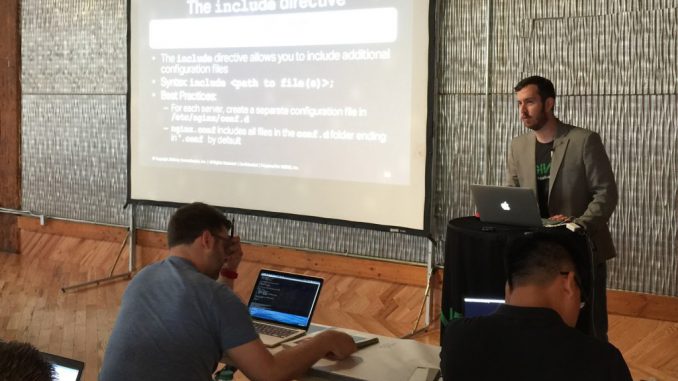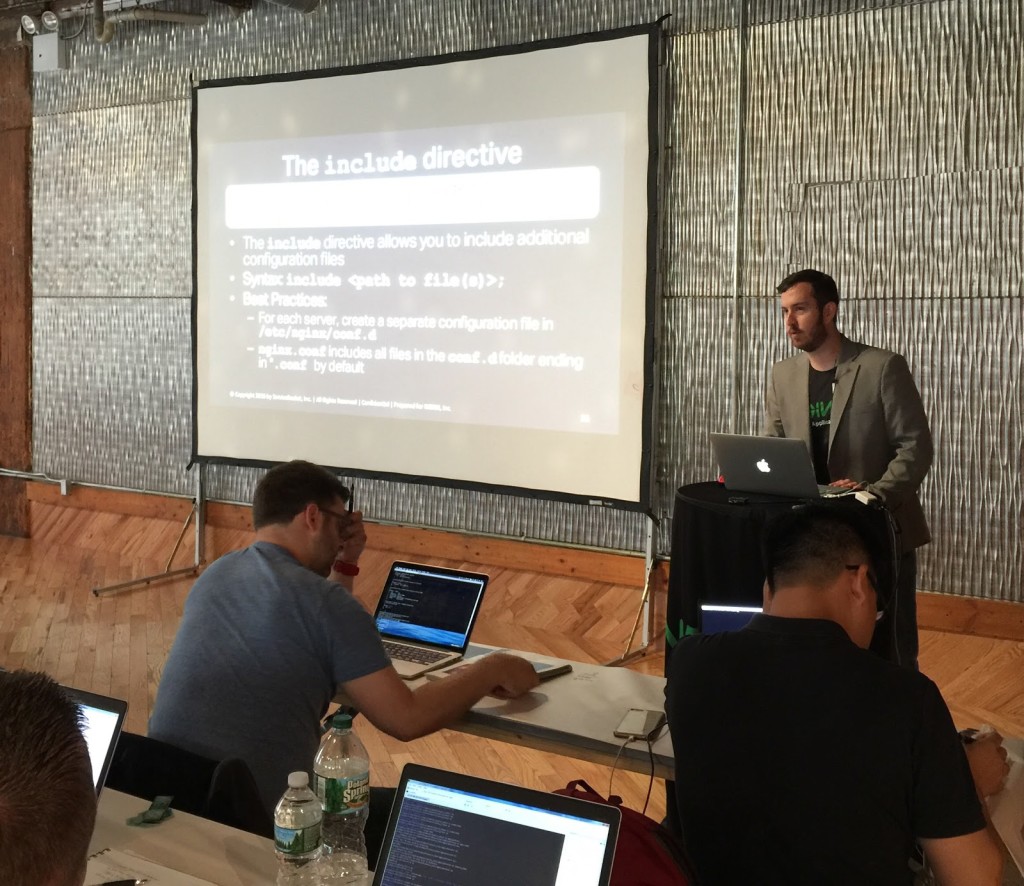
Introducing NGINX Core Training

Thousand of students have already taken advantage of NGINX training courses, learning how to configure and run both the open source NGINX software and NGINX Plus. Now we’ve updated the NGINX training curriculum to include their feedback and the latest product features.
NGINX Core is an all‑day, instructor‑led class that provides the foundation you need to administer, configure, and manage NGINX and NGINX Plus. NGINX Core combines lecture, instructor demos, and hands‑on labs.
NGINX Core is intended for admins, architects, and DevOps professionals who are self‑taught or new to NGINX. Participants don’t need NGINX experience, just a basic understanding of web servers and of the Unix command line. Required skills include running Unix commands, navigating the file system, and creating and editing text files.
The new course features deeper conceptual and hands‑on coverage of key areas like proxy, caching, logging, and security. And we’ve increased the number and intensity of hands‑on activities.
After completing NGINX Core, you’ll be able to implement the most common use cases for NGINX – web server, proxy server, load balancer, and caching server – in a secure, scalable way.
During the training, you’ll implement each use case in a preconfigured, personal training environment, building a progressively more complex NGINX server as you go. For example:
- In the lesson on Serving Static Content, you’ll implement a basic web server in your training environment to serve static content.
- By completing Proxying Connections, you’ll add a simple proxy server to your implementation.
- In a hands‑on lab you’ll implement session persistence, configuring the
stickydirective for an upstream group of load‑balanced Tomcat servers. - In later modules, you’ll add HTTPS security to your environment, configure caching, rewrite and redirect requests, route connections, and implement variables, maps, and several load‑balancing methods.
After completing NGINX Core you’ll be able to configure NGINX to:
- Serve static content
- Proxy connections to upstream servers
- Route connections
You’ll also learn how to:
- Use variables in rewrites, routing, and maps
- Implement compression
- Configure and customize logging
- Configure load balancing for HTTP, TCP, and UDP using the weighted round robin, least time, least connections, hash, and IP hash methods
- Enable live activity monitoring of servers and upstreams
- Implement and manage caching
- Configure HTTPS and site security
- Leverage the NGINX API to dynamically configure servers at runtime
- Install NGINX from binary and from source files
NGINX Core is also your gateway to more advanced training topics like Managing NGINX Performance, Microservices Network Architectures with NGINX, and others.
For more information about NGINX Core, delivery dates, or to enroll, visit NGINX University.
The post Introducing NGINX Core Training appeared first on NGINX.
Source: Introducing NGINX Core Training





Leave a Reply